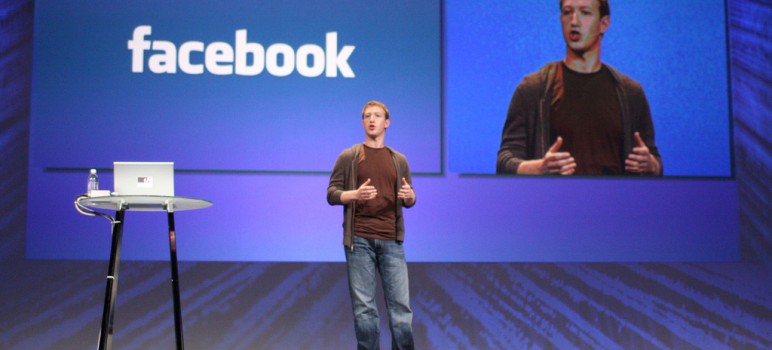Anyone who's tried to tap into wireless internet in downtown San Jose knows that the city's ballyhooed Wickedly Fast Wi-Fi fails to live up to its name. Facebook has offered to change that.
San Jose this week teamed up with the social media giant to turbocharge the city's free wi-fi network. Using a new technology called Terragraph, Facebook will strengthen the existing wireless signal enough to circumvent buildings, crowds and other physical barriers.
The technology has been tested on Facebook's Menlo Park campus. City officials say they're poised to launch the downtown pilot later this year.
Below is the city's full press release:
City of San Jose and Facebook Connectivity Lab to Partner on Gigabit-Speed Distribution Network for High-Speed WiFi Project
The City of San José and Facebook announced today a public-private partnership to deploy an innovative wireless distribution network to support an open, publicly accessible, gigabit-speed outdoor WiFi network to be deployed in Downtown San José in late 2016.
“Cities worldwide are searching for ways to ensure that all residents can enjoy the benefits of internet connectivity by broadening access to fast and affordable broadband service,” said Mayor Sam Liccardo. “San José is proud to work with a global tech leader like Facebook to pilot a next-generation technology that can help us achieve these goals and support research to support communities around the world.”
“Challenges attaining fast, reliable wireless internet can be found anywhere, even in the heart of Silicon Valley,” said Tim Danford, Facebook’s Network Deployment Product Lead “Terragraph is a Facebook Connectivity Lab project that seeks to bring fast, reliable and inexpensive connectivity to dense urban areas and we are excited to have the City of San José as our first partner to showcase this technology later this year.”
Facebook’s Terragraph wireless system utilizes distribution nodes to connect high-speed fiber, and send it to other distribution nodes throughout the downtown area using 60 GHz (also known as “V-band”). And, by utilizing commercial off-the-shelf components and leveraging the cloud for intensive data processing, the Terragraph system is optimized for high volume, low cost production. Read about the technical details of the Terragraph system
The City and Facebook will work together on a research pilot deployment of the Terragraph network that is street-level Wi-Fi and open to the public. Through the public-private partnership, Facebook will provide the hardware and software for the Terragraph system, and the City will provide access to its streetlights and other related infrastructure needed to build-out the network.
Facebook chose San José due to its existing free Wi-Fi infrastructure downtown and its willingness to become a demonstration city to showcase new technologies.
The Terragraph research project is aligned to one of the main pillars of the Mayor’s San José’s Smart City Vision, which the City Council adopted earlier this year. The plan seeks to demonstrate new technologies, while using big data analytics and other digital tools to improve city services and the quality of life for residents in San Jose. The plan’s goal is to transform San José into the most innovative city in America by 2020.
“This project is yet another example of San José’s commitment to becoming a true ‘Demonstration City’ and deploying the latest innovations and technologies in ways that can significantly benefit our community,” said Shireen Santosham, Mayor Liccardo’s Director of Innovation. “We look forward to expanding on our partnerships with the private sector to ensure we’re continually improving the ways in which we serve the public.”
The initial research trial deployment of the Terragraph distribution network will focus on the Downtown San José core, with a targeted launch for late 2016. The City of San José and Facebook are also exploring plans for deployments in underserved San Jose neighborhoods and transit innovation corridors.
“The future deployment of this advanced network will open up new opportunities to our residents, businesses and entrepreneurs,” continued Mayor Liccardo. “And because we’re piloting this network right here in the heart of Silicon Valley, I am also excited to see how our innovative community can leverage and build upon this deployment to advance the next big idea.”


Will the new system work in the library and at San Jose State? Currently you have to have a password/library card to use internet in these places.
NO SJSU did not want to join this project :(
It’s the NSA’s way of saying “BIG BROTHER IS WATCHING YOU”, tell me what you think……….
Why San Jose and not Facebook HQ in Menlo Part? Don’t they want to experience some Facebook generosity? Don’t citizens get a say into what act of “goodwill” is being forced upon them? I thought Liccardo was pushing for a more modest San Jose better prepared to for future uncertainty, or was that just a lie?
Don’t we have enough active projects? Can we please stop piling them on before finishing the ones we’ve got? Didn’t Berkeley just pass a law requiring wireless retailers to indicate that radiation levels emitted from smart phones in with wifi on exceed the minimum safe level according to federal standards, how much radiation will this super wireless infrastructure blanket the city?
What the hell San Jose? Knock off this nonsense already. This city resembles Chicago or Detroit more than it does San Francisco or New York. People are already beginning to be ashamed for calling this city home, just like Fresno or Bakersfield.